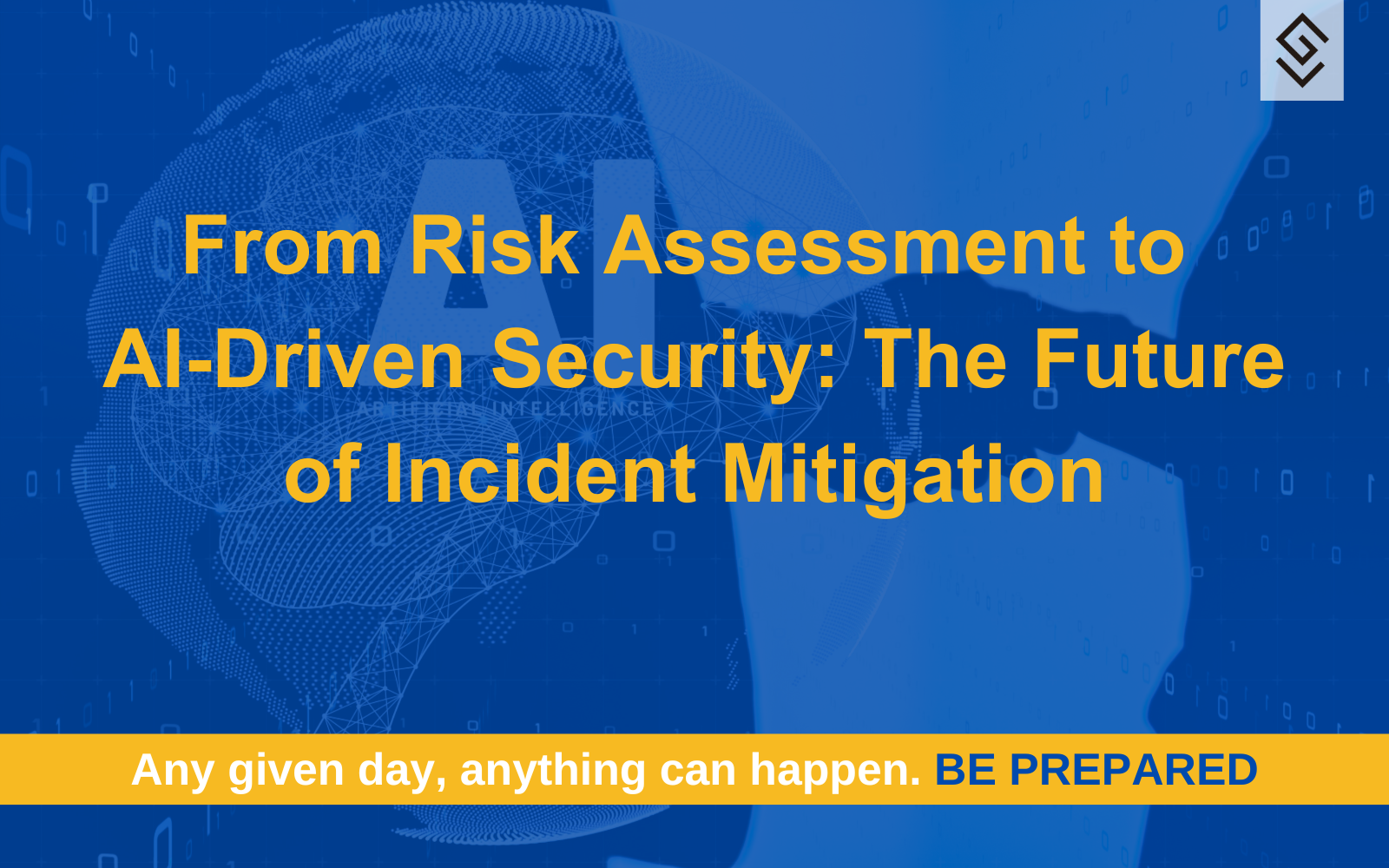Security is no longer just locks, cameras, and alarms — today’s environment needs an effective defense against continuously changing and developing threats; as the bad guys become smarter, so must security professionals. Access control, video surveillance, and intrusion detection are time-tested security initiatives. However, artificial intelligence (AI) is changing how we approach physical security system design. From improving real-time monitoring, proactive responsiveness, and vulnerability mitigation, AI is transforming how LARGO Consulting Services works with security integrators and clients to provide the highest level of protection.
The Foundation: A Comprehensive Risk Assessment
A robust security strategy begins with a comprehensive vulnerability and risk assessment. Our VIZION360 assessment process allows the LARGO team and client to understand the specific vulnerabilities of a property, school, business, organization, stadium, or institution, which helps determine the best security measures.
Our VIZION360 assessment process examines existing physical, electronic security measures, the impact of environment conditions on security, operational procedures, emergency response plans, security personnel deployment, physical barriers, and training to determine potential weaknesses.
By understanding a sites vulnerabilities, risks, and weaknesses LARGO provides a roadmap on how to best protect a client’s most valued assets. However, the assessment, resource deployment, and an effective system design process is only part of our VIZION360 process. The most important part of any implementation of a security strategy requires continuous monitoring and adaptation, which is how AI can help.
The Role of AI in Developing Physical Security Strategies
Access Control: Protecting People From Unauthorized Entry
When it comes to access control, we rely heavily on security personnel and or electronic access control systems, yet both are subject to problematic failures in security strategies. However, adding AI can enhance access control by introducing facial recognition, behavioral analytics, and anomaly detection. For instance, AI-powered access control systems can detect tailgating, attempted internal access of highly sensitive areas, and system failures while triggering an alert and proactive response in real time.
Video Surveillance: Seeing More, Responding Faster
Video surveillance has always been a fundamental element of security structures; however the introduction of AI-powered analytics has enhanced its capacity to the next stage. Most of the traditional CCTV systems are based on the human monitoring, which can be fatigued and create mistakes. Using AI, security teams can automate the analysis of video footage, leading to threat detection and proactive response.
AI-powered video surveillance can capture suspicious behavior, recognize license plates, and even detect unattended items in sensitive areas. This works by alerting security teams of potential threats before they turn into incidents, which helps reduce incident response time.
By implementing an AI-based video surveillance system with access control and intrusion detection systems AI can automatically modify security measures depending on detected behavior.
Intrusion Detection: Stopping Threats Before They Escalate
Intrusion detection systems (IDS) may seem to be fundamental security devices for securing the perimeter and controlling access to sensitive areas in a facility. However, modern IDS utilize AI to distinguish between real threats and false positives. Traditional motion sensors might set off false alarms, for example, animals, or falling objects, causing nuisance alarms that over time may go unacknowledged. Thanks to the power of AI-driven IDS analyzes movement trends and environmental conditions to minimize false positive alerts.
How AI is Transforming Incident Mitigation
Let’s take a look at how AI is mitigating vulnerabilities and risks.
-
- Predictive Threat Analysis: AI algorithms can analyze past security data to enable them to identify suspicious behaviors and predict possible threats before they take place. This allows businesses to respond accordingly, such as recalibrating their security patrols, or reinforcing weak entry points.
- Automated Incident Response: These AI-powered security systems can lockdown buildings, sound alarms, or call emergency responders when a security breach is detected and verified, reducing response time.
- Behavioral Stressors – AI is progressing to the point that it can recognize potential threats by analyzing facial features and behavioral patterns, alerting security personnel when a potential risk identified.
- Cyber-Physical Integration: The integration of AI with cybersecurity systems allows organizations to not only secure their cyber assets but also network their physical assets into one platform, allowing for comprehensive monitoring of security threats. Security does not stop in just one or the other, the more sophisticated attacks target networks even as they target physical assets.
At LARGO Consulting Services, we believe that security should never be reactive; it must be proactive, informative, and dynamic. Whether AI is part of your access control, video surveillance, or intrusion detection systems, AI can mitigate your exposure to risks and vulnerabilities.
Rather than asking if AI can contribute to your physical security initiatives, you should ask how AI can “Create Secure Environments Wherever People Live, Learn, Work, Shop, And Play.”
By working with strategic partners like Secured & Prepared Consulting and Cardinal Point Security Group, we consistently strive to provide our clients with the highest level of security in healthcare institutions, K-12 schools, and places of worship.
Contact LARGO Consulting Services today to learn how we can help you stay ahead of tomorrow’s threats.
Disclaimer:
Portions of this article may have been enhanced using AI technology to improve grammar, readability, and search engine optimization. The core ideas and content, however, reflect the authentic insights and experience of the author.

